
Stepan Andriyovych Bandera was a Ukrainian far-right leader of the radical militant wing of the Organization of Ukrainian Nationalists, the OUN-B.

The Ukrainian Insurgent Army was a Ukrainian nationalist partisan formation founded by the Organisation of Ukrainian Nationalists (OUN) on 14 October 1942. During World War II, it was engaged in Nazi collaborationism. However, the UPA later launched guerrilla warfare against Nazi Germany, the Soviet Union, and both the Polish Underground State and Polish Communists. It conducted the massacres of Poles in Volhynia and Eastern Galicia, which are recognized by Poland as a genocide, and was involved in some acts of anti-Jewish violence.
The Organisation of Ukrainian Nationalists was a Ukrainian nationalist organization established in 1929 in Vienna, uniting the Ukrainian Military Organization with smaller, mainly youth, radical nationalist right-wing groups. The OUN was the largest and one of the most important far-right Ukrainian organizations operating in the interwar period on the territory of the Second Polish Republic. The OUN was mostly active preceding, during, and immediately after the Second World War. Its ideology has been described as having been influenced by the writings of Dmytro Dontsov, from 1929 by Italian fascism, and from 1930 by German Nazism. The OUN pursued a strategy of violence, terrorism, and assassinations with the goal of creating an ethnically homogenous and totalitarian Ukrainian state.
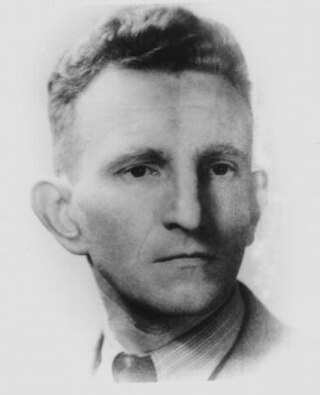
Roman-Taras Yosypovych Shukhevych was a Ukrainian nationalist and a military leader of the nationalist Ukrainian Insurgent Army (UPA), which during the Second World War fought against the Soviet Union and to a lesser extent against the Nazi Germany for Ukrainian independence. He collaborated with the Nazis from February 1941 to December 1942 as commanding officer of the Nachtigall Battalion in early 1941, and as a Hauptmann of the German Schutzmannschaft 201 auxiliary police battalion in late 1941 and 1942.
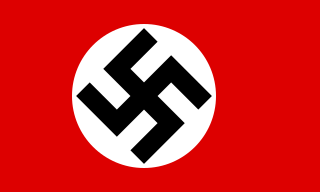
The Reichskommissariat Ukraine was established by Nazi Germany in 1941 during World War II. It was the civilian occupation regime of much of German-occupied Ukraine. It was governed by the Reich Ministry for the Occupied Eastern Territories headed by Alfred Rosenberg. Between September 1941 and August 1944, the Reichskommissariat was administered by Erich Koch as the Reichskommissar. The administration's tasks included the pacification of the region and the exploitation, for German benefit, of its resources and people. Adolf Hitler issued a Führer decree defining the administration of the newly-occupied Eastern territories on 17 July 1941.

Andriy Atanasovych Melnyk was a Ukrainian military and political leader.

The 14th Waffen Grenadier Division of the SS , commonly referred to as the Galicia Division, was a World War II infantry division of the Waffen-SS, the military wing of the German Nazi Party, made up predominantly of volunteers with a Ukrainian ethnic background from the area of Galicia, later also with some Slovaks.
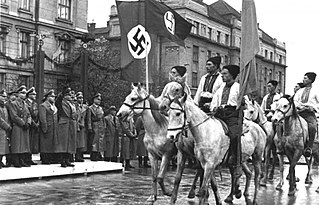
Ukrainian collaboration with Nazi Germany took place during the occupation of Poland and the Ukrainian SSR, USSR, by Nazi Germany during the Second World War.

Volodymyr Panteleimonovych Bahaziy was a Ukrainian nationalist affiliated with Andriy Melnyk who was head of Kyiv City Administration under German occupation from October 1941 to February 1942.
Petro Oleksandrovych Voinovsky was a Ukrainian nationalist. He lived in Bukovina, served in the Romanian army in the rank of lieutenant, resigned in 1935 due to the policy of Romanianization. He participated in Ukrainian scouting organization Plast, joined OUN in the 1930s. He initially supported Stepan Bandera, but later moved to Andriy Melnyk's faction. Since 1940 Voinovsky was the regional leader of OUN in Bukovina and Bessarabia.
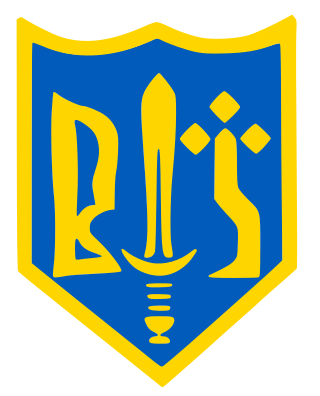
Ukrainian People's Revolutionary Army, also known as the Polissian Sich or the Ukrainian Insurgent Army, was a paramilitary formation of Ukrainian nationalists, nominally proclaimed in Olevsk region in December 1941 by Taras Bulba-Borovets, by renaming an existing military unit known from July 1941 as the UPA-Polissian Sich. It was a warlord-type military formation without a strict central command. From spring 1942 until the autumn of 1943, it acted against the German rural civil administration and warehouses, from spring 1943 it also fought against Soviet Partisans and some units against Poles; from July–August 1943, it clashed with OUN-B Bandera's UPA and UB units.
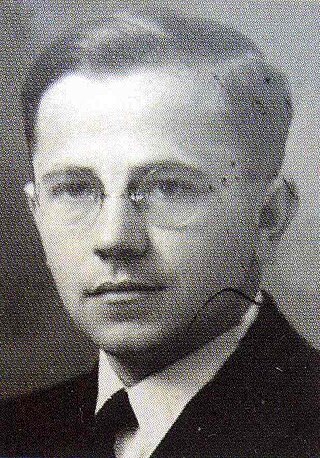
Ivan Andriyovych Rohach was a Ukrainian journalist, poet, writer, and political activist.

Mykola Oleksandrovych Kapustiansky was a General in the army of the Ukrainian National Republic and one of the founders of the Organization of Ukrainian Nationalists. Kapustiansky was born in Yekaterinoslav Governorate in central Ukraine, then part of the Russian Empire. He fought in the Russian-Japanese War and in 1912 graduated from the General Staff Academy in Saint Petersburg, reaching the rank of colonel during the First World War. After the Revolution of 1917 Kapustiansky joined the Ukrainian units of the Russian army and rose rapidly in its ranks, becoming chief of staff of the First Division of the First Ukrainian Corps in August 1917, and in early 1918 chief of staff of the southwestern front. Under the Directory of the Ukrainian National Republic, he served as operations chief and then as general quartermaster of the Army of the Ukrainian National Republic. In 1920, he was promoted to brigadier general.

The Ukrainian Auxiliary Police was the official title of the local police formation set up by Nazi Germany during World War II in Eastern Galicia and Reichskommissariat Ukraine, shortly after the German occupation of the Western Ukrainian SSR in Operation Barbarossa.

The Holocaust saw the systematic mass murder of Jews in the Reichskommissariat Ukraine, the General Government, the Crimean General Government and some areas which were located to the east of Reichskommissariat Ukraine, in the Transnistria Governorate and Bessarabia, Northern Bukovina and the Hertsa region and Carpathian Ruthenia during World War II. The listed areas are currently parts of Ukraine.
Maksym Skorupsky was a Ukrainian military leader of the Ukrainian Insurgent Army.

Mykola Stsiborskyi, also may be spelled Stsiborsky, Stsyborsky, Ściborski, or Sciborski was a Ukrainian nationalist politician who served on the Provid, or central leadership council of the Organization of Ukrainian Nationalists (OUN), and who was its chief theorist. He sided with Andriy Melnyk when the OUN split into two hostile factions, and was likely murdered by followers of Melnyk's rival Stepan Bandera.
Ukrainian People's Militia or the Ukrainian National Militia, was a paramilitary formation created by the Organization of Ukrainian Nationalists (OUN) in the General Government territory of occupied Poland and later in the Reichskommissariat Ukraine during World War II. It was set up in the course of Operation Barbarossa, the 1941 invasion of the Soviet Union.
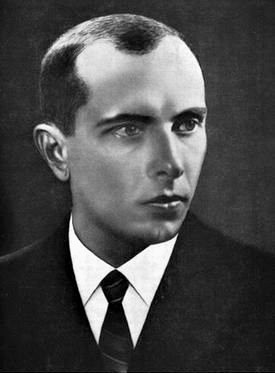
A Banderite or Banderovite is a name for the members of the OUN-B, a faction of the Organization of Ukrainian Nationalists. The term, used from late 1940 onward, derives from the name of Stepan Bandera (1909–1959), the ultranationalist leader of this faction of the OUN. Because of the brutality utilized by OUN-B members, the colloquial term Banderites quickly earned a negative connotation, particularly among Poles and Jews. By 1942, the expression was well-known and frequently used in western Ukraine to describe the Ukrainian Insurgent Army partisans, OUN-B members or any other Ukrainian perpetrators. The OUN-B had been engaged in various atrocities, including murder of civilians, most of whom were ethnic Poles, Jews, and Romani people.

The anti-Soviet resistance by the Ukrainian Insurgent Army was a guerrilla war waged by Ukrainian nationalist partisan formations against the Soviet Union in the western regions of the Ukrainian SSR and southwestern regions of the Byelorussian SSR, during and after World War II. With the Red Army forces successful counteroffensive against the Nazi Germany and their invasion into western Ukraine in July 1944, UPA resisted the Red Army's advancement with full-scale guerrilla war, holding up 200,000 Soviet soldiers, particularly in the countryside, and was supplying intelligence to the Nazi Sicherheitsdienst (SD) security service.














